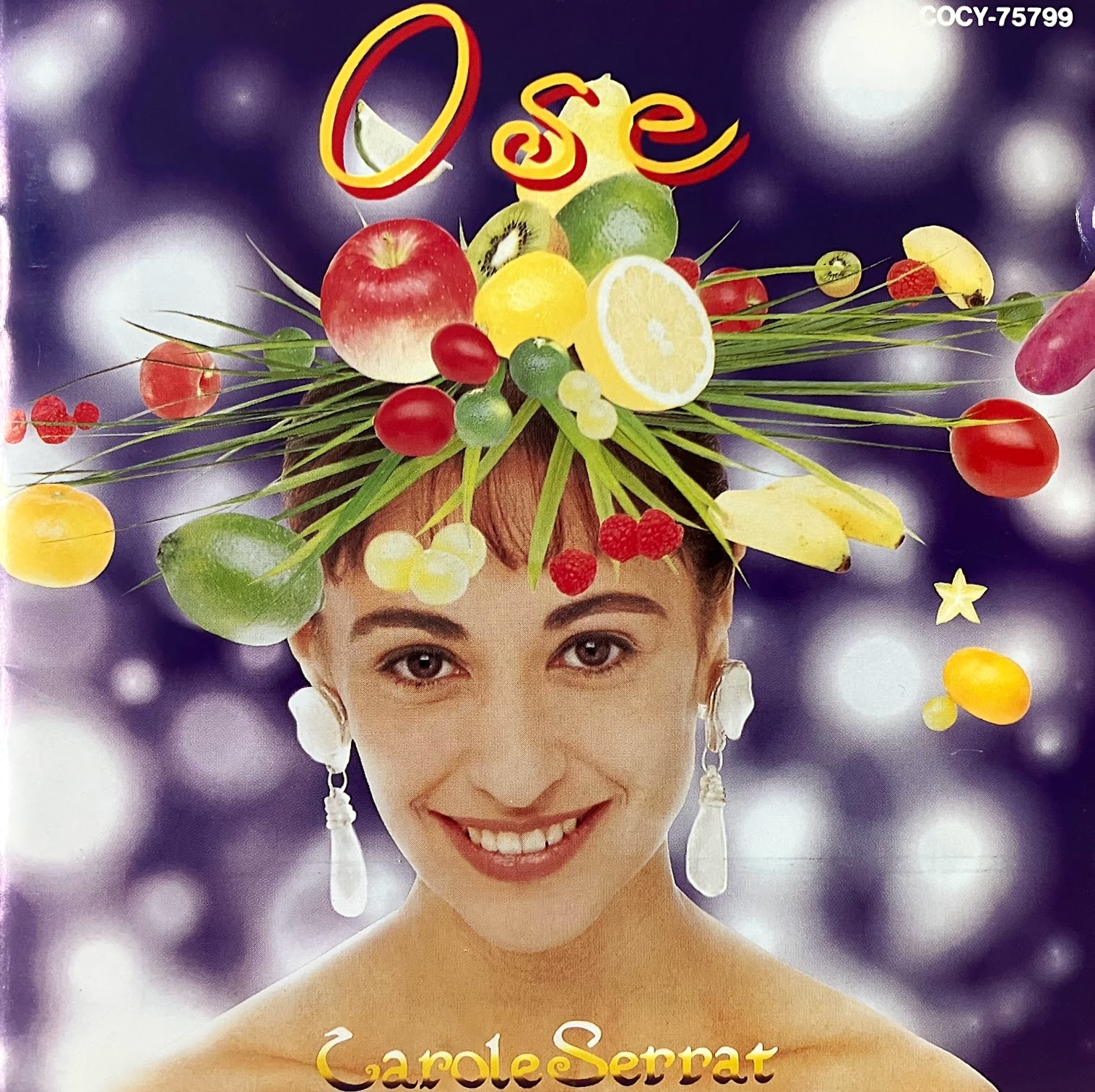Sometimes, it’s the combined power of simpatico ideas that yields the biggest payoff. I remind myself of this whenever I listen to the wonderfully sunny, “summery” music of Carole Serrat. Made in Japan but born in France, Carole’s OSE serves as a perfect gateway into a little-known bit of musical symbiosis.
Before Carole’s current career as a sophrologist and wellness expert, she was a young singer known as Martine Seror. Together with her longtime creative and real-life partner, composer Laurent Stopnicki, Carole spent the ’80s making the rounds of various Paris record labels and mass media, trying to find a foothold in the French pop market.

As a chanteuse, Carole arguably failed to make much of an impact on French music culture. Singing material that was dated—even by early ’80s European standards—didn’t help either. It wasn’t until 1987, with the release of her fifth single (the second under her real name), that Carole found an audience for what she wanted to pursue.
It was 1987’s “Ose” that caught the attention of Sony Japan, who invited Carole to bring her talents to a different audience. In the land of the rising sun, Carole explored writing for an audience unaccustomed to French artists drawing inspiration from their brand of pop music. In a stroke of fortuitous luck, Epic (the label she ended up signed to) convinced Carole to work with a Japanese artist steeped in the sonorities and affectations of French music: Toshiro Mitsutomi.
Toshiro Mitsutomi, as you may recall from the F/S archives, was a studied multi-instrumentalist and composer with a knack for Impressionist-inspired ambient music. In 1988, Toshiro released an album that reimagined some of Erik Satie’s most famous pieces as Japanese interior music—a “furniture music” for the modern era, akin to the work of other kankyō ongaku artists. On Carole Serrat’s first Japanese release, 1991’s Message En Rouge, Toshiro was tasked with taking a different turn: exploring and rearranging contemporary French pop in a forward-looking manner.
On their first collaborative work together, Message En Rouge, tracks like “Ces Beaux Jours,” “Miroir Magique,” and the titular track showcase an interesting blend of French pop smarts—something Carole and Laurent longed to express—and Toshiro’s vibrant, almost Trevor Horn-esque musical accompaniment. The music evokes a sense of what another French-turned-Japanese artist, Clémentine, was achieving, as well as the emerging form of French electropop at the end of the ’80s. Throughout the album, Carole stretches her upper vocal range in a way that aligns more with Japanese pop sensibilities.
Buoyed by the success of her debut, Carole shifted gears later in 1991, collaborating with producer Jun Takagi—best known for his work with City Pop heavyweight Tatsuhiko Yamamoto—to explore the funky sounds of Japanese AOR and Manhattan Transfer-esque vocal jazz pop. Featuring the contributions of “New Music” luminaries like Ken Morimura and Hiroyuki Namba, Carole’s French influences were largely replaced with more Latin and West Coast resonances.
When it worked, songs like her cover of Hi-Fi Set’s “Chuo Freeway,” “Tout De Moi T’est Acquis,” and “Pluie de Decembre” saw Carole carve a path between latter-day Isabelle Antenna and future shibuya-kei artists like Pizzicato Five (who I wager must have stumbled upon her work). When it didn’t, it felt like a watering down of the more offbeat ideas and unique musical niches Carole could have explored.

What makes OSE my top recommendation for you is how a change in scenery and a rekindling of an old friendship reignited a daring beginning.
In 1993, Carole joined the sun-kissed roster of the Japanese jazz-tinted label Portazul. Given more creative freedom to reconnect with the French scene, Carole invited Toshiro to expand on what they started with Message En Rouge.
Taking the literal meaning of osé to heart, everyone involved dared to be more adventurous with this record. Recorded in two sessions—one in late July and another from August to September—the feeling of late summer permeates the album. The light Mediterranean influences that simmered beneath her debut were allowed to boil over, resulting in sexier, more red-blooded music, especially on tracks like the opener, “Parfum D’Ete.”
OSE’s différence lies in the more mature moods Carole expresses. The balladry of the titular track brings a sophisticated form of French soul that Carole handles beautifully. Others, like “Ecrit Dans Le Nuit”—featuring music by Laurent Stopnicki—embody the more meditative, offbeat sensibility native to their roots. On album highlights like “Poison D’amour,” Toshiro fully stretches his mastery of a newer form of French dance music, rearranging Kyohei Tsutsumi’s enka classic for Judy Ongg, “魅せられて,” into a darker, more searing torch song.
Gorgeous originals like “Jardin De Roses” and “Premier Baiser” anticipate the work of other bands mixing new school urban rhythms with the luxurious rhythms of Chanson. OSE is most impressive when it digs deep into the Japanese Chanson songbook, as in “Le Cours De Ma Vie” (popularized by Hibari Misora as “川の流れのように”), finding a shared spirit (if not language) that connects Carole and Toshiro to their new country.

Hearing a song like “A Lui A Jamais” must have struck a nostalgic chord with those familiar with Norihiko Hashida & Climax’s original, “花嫁.” Carole’s transformation of the Byrds-like original into her own slice of Balearic sunshine is revelatory in its own way. As the album closes with another original, “Si Je Demande Ta Main,” I find myself searching for another example of an artist who so fully internalized an adopted homeland. In this case, the beauty lies in the right balance of give and take. Judged by these merits, Carole and Toshiro coaxed just the right amount of brilliance from each other.
